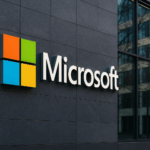The current market environment has compelled U.S. businesses to reassess their pricing and supply chain strategies due to persistent tariff pressures. Recent shifts in trade policies have driven firms to rely on technology, especially artificial intelligence, to navigate complex regulatory landscapes while adjusting for increased costs. Some companies are even reevaluating internal processes and leaning on advanced analytics to support strategic shifts.
Reports from various periods indicate that tariff-induced uncertainties have long pushed companies toward integrating smarter tech solutions. Earlier insights pointed to similar approaches, while now the emphasis on AI spans from real-time monitoring of policy changes to optimizing supplier networks. Diverse industry publications have stressed the importance of detailed data management, echoing a trend that is now more pronounced in the face of evolving tariffs.
How do companies manage the evolving tariff environment?
Businesses are adopting agile pricing techniques and dynamic supply chain adjustments to mitigate tariff impacts.
“Tariffs, like any crisis, are extremely dynamic — and the latest round that imposed tariffs on all U.S. importers is a perfect example,”
stated Leagh Turner, CEO of Coupa Software, emphasizing the varied effects on companies depending on their market interactions. Firms are increasingly relying on AI platforms like those developed by Zilliant to analyze historical trends and predict tariff fluctuations in real time.
Can AI address cost and supplier challenges effectively?
AI systems assist companies by automating tariff monitoring and evaluating supplier alternatives.
“AI-powered trade policy monitoring scans government announcements and regulatory updates to forecast potential tariff shifts,”
remarked Tarun Chandrasekhar, president and CPO at Syndigo. Other industry leaders have highlighted that AI also assesses material availability and guides the selection of substitute resources, ensuring that cost control and compliance are maintained with minimal disruption to product quality.
Additional insights show that platforms such as SpendHQ and Hiswai complement the AI approach by offering clean, structured data essential for accurate tariff classification and risk reduction. Comments from executives indicate that while AI offers significant operational benefits, its effectiveness depends on reliable data inputs and strategic integration within broader cost-management measures.
The discussion extends to workforce considerations, with some reports noting that about 82% of employees experience productivity gains from generative AI tools, even as concerns over job security persist. Executives like Shopify CEO Tobi Lutke have communicated the need to justify the replacement of additional headcount with AI capabilities, underlining a cautious yet proactive industry outlook.
Companies are urged to combine advanced technologies with meticulous data stewardship to counteract tariff-related cost pressures. A well-rounded strategy that includes scenario planning, supplier diversification, and continuous monitoring of regulatory changes will be useful in managing risk and reducing operational expenses under evolving trade policies.










